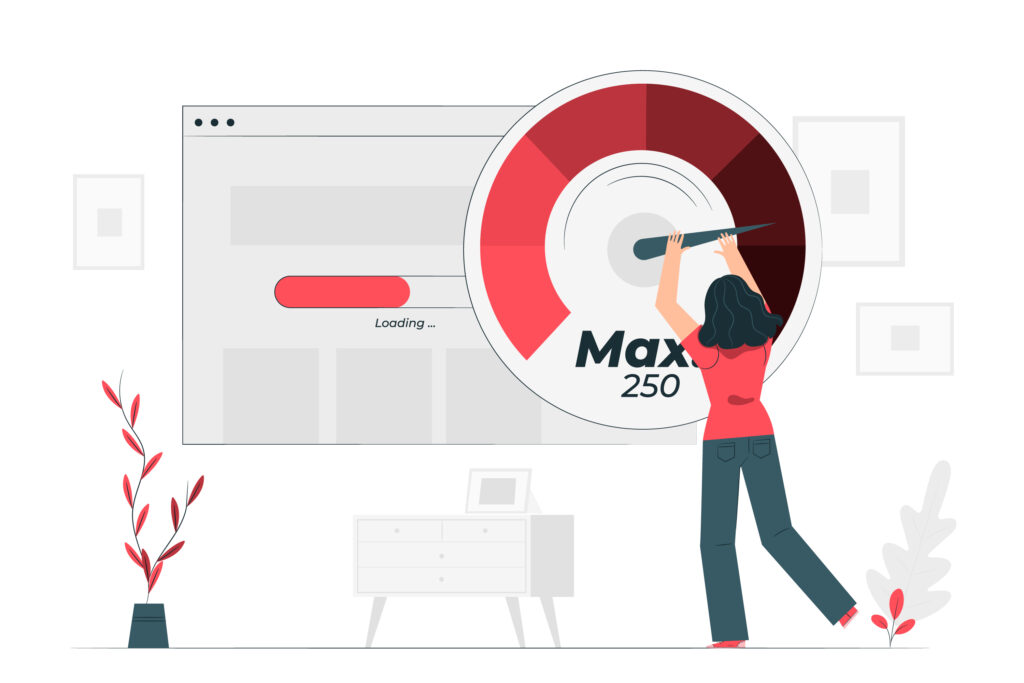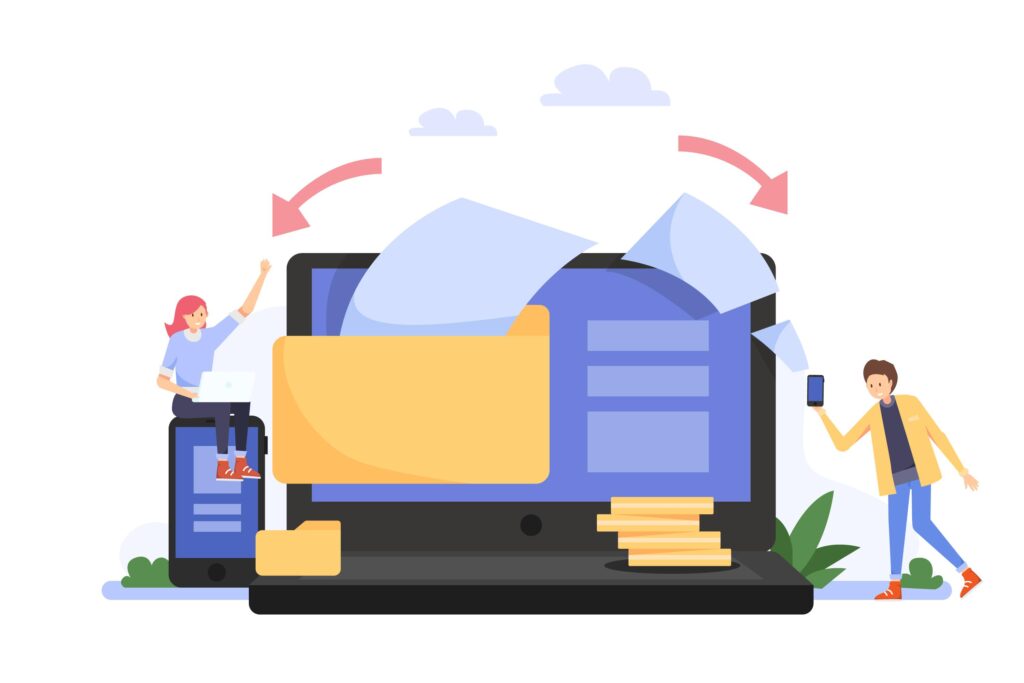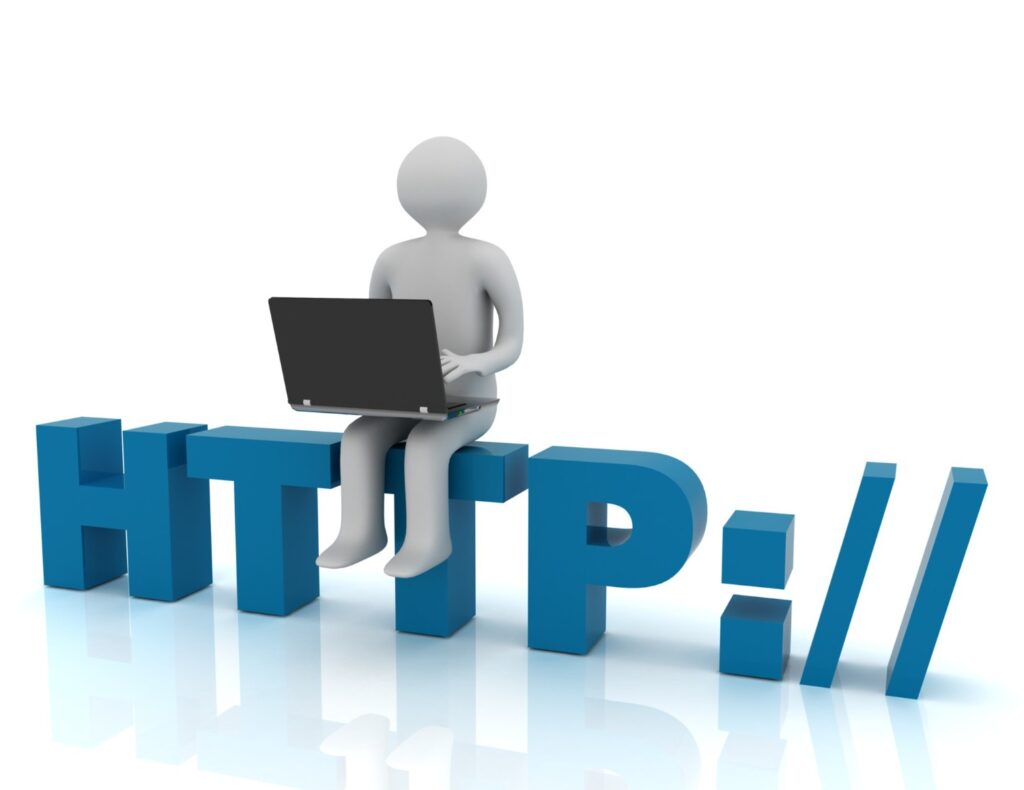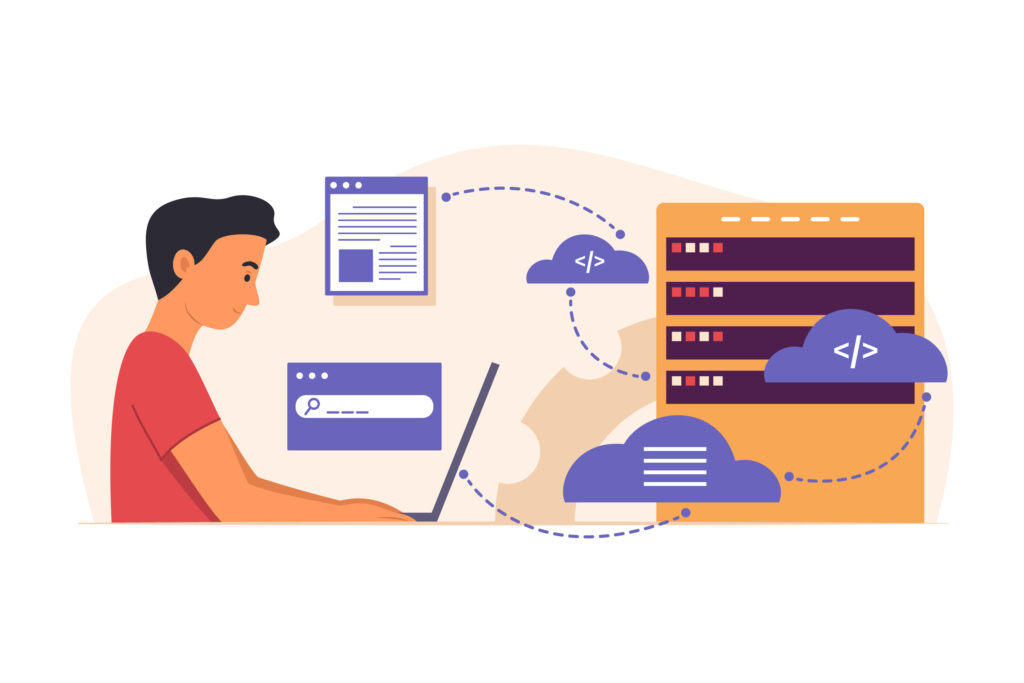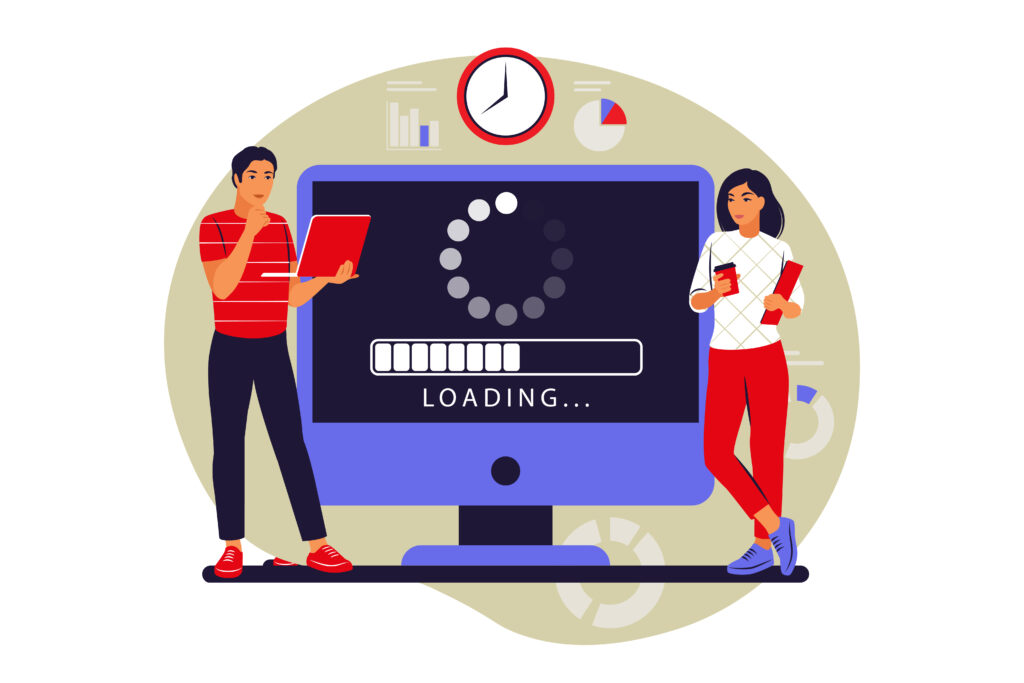How To Optimize Your eCommerce Website Speed For Maximum Performance

Are you tired of waiting for your website to load because of its slow website speed? Do you feel frustrated when it takes forever to open a page and end up closing it before even seeing the content? Well, you’re not alone. Slow-loading websites are a major turnoff for users, and they can damage your business’s reputation.
In today’s fast-paced world, people expect everything to happen instantly, and if your website doesn’t meet their expectations, they’ll move on to your competitors. But don’t worry; there’s a solution. I’ll explain how to optimize your Ecommerce website speed for maximum performance in this article.
Website speed optimization is crucial if you want to provide the best user experience and increase conversions. A faster website means happier visitors who are more likely to stay longer on your site and engage with your content.
Moreover, Google considers page speed as one of the ranking factors for search results. So if you want to improve your search engine visibility and attract more organic traffic, optimizing your website speed is a must.
But how can I optimize your Ecommerce website speed and performance? That’s what we’re going to cover in this article. From choosing the right hosting provider to minimizing HTTP requests, we’ll go through all the necessary steps that will help you achieve lightning-fast website speed.
So let’s get started!
Strategies For Maximizing Website Speed And Performance
Compressing files is an essential part of optimizing website speed and performance. It reduces the size of the files to be downloaded, allowing them to be transferred faster.
Minimizing HTTP requests is also vital; reducing the number of requests made can significantly reduce page loading time.
I recommend combining, minifying, and caching files to achieve maximum performance.
Compressing and minimizing are the two main strategies for optimizing a website’s speed and performance.
1. Compressing Files
Imagine your website as a car on the freeway. The faster it goes, the more traffic it can handle and the quicker it can reach its destination. Similarly, your website speed plays a vital role in engaging users and increasing conversions.
If you need help with slow load times, compressing files is an effective strategy for maximizing website speed and performance. Compressing files involves reducing the file size of large images, videos, or other media without sacrificing quality. This process enables your website to load faster by reducing the amount of data that needs to be transferred from servers to browsers.
One way to compress files manually is by using online tools like TinyPNG. Alternatively, you can use plugins like WP Smush or EWWW Image Optimizer if you use WordPress.
When seeking ways to increase website speed, pay attention to the importance of optimizing your images and media files. Speedtest Google reports that over 50% of websites contain unoptimized images that slow down load times. Compressing these files improves user experience and enhances SEO ranking since search engines consider page loading time a crucial factor in ranking algorithms.
In conclusion, compressing files is an easy yet effective strategy for improving website speed and performance. By reducing file sizes, you can reduce load times and provide users with a seamless browsing experience while boosting SEO rankings. Take advantage of online tools or plugins available today and start compressing your files for maximum efficiency on your site!
2. Minimizing HTTP Requests
Now that we’ve covered compressing files to improve website speed and performance, let’s discuss another strategy: minimizing HTTP requests.
When a user visits your website, their browser sends a request to the server for all the necessary files to display the page. These files include CSS stylesheets, JavaScript code, images, and more. Each file requires a separate HTTP request, which can slow download times.
One approach to minimize HTTP requests is combining multiple CSS and JavaScript files into one file each. This reduces the number of requests required and speeds up load times.
Additionally, you can use inline CSS and JavaScript code instead of external files for small amounts of code. This eliminates the need for an additional HTTP request altogether.
Another way to reduce HTTP requests is by using image sprites. Image sprites combine multiple images into one larger image file. By doing this, you only need one HTTP request for all the images in the sprite rather than individual requests for each image.
As with compressing files, optimizing your website’s performance by minimizing HTTP requests can significantly improve user experience and SEO ranking. By reducing load times and providing a smooth browsing experience, users are more likely to stay on your site longer and engage with your content.
So take control of your website’s speed by implementing these strategies today!
3. Leveraging Caching
Now that we’ve discussed minimizing HTTP requests let’s move on to another important technique for achieving and maintaining fast website speed: leveraging caching.
Caching is the process of storing frequently accessed data in a temporary storage area to retrieve it when needed quickly. By leveraging caching, you can significantly reduce the time it takes for your website to load.
One way to leverage caching is by using browser caching, which we briefly touched upon earlier. When a user visits your website for the first time, their browser caches certain files so that they don’t need to be reloaded whenever they access your site. By setting an appropriate expiration date on these cached files, you can reduce the number of HTTP requests required for subsequent page loads and further speed up your site.
Another type of caching is server-side caching. This involves storing frequently accessed data in a cache on the server itself rather than relying solely on client-side caching via browsers. Server-side caching can be particularly effective if you have a large database or frequently accessed resources like images or videos.
Lastly, content delivery networks (CDNs) are another powerful way to leverage caching. A CDN is a network of servers worldwide that store cached versions of your website’s files and serve them to users based on their geographic location. Using a CDN, you can ensure that your website loads quickly, no matter where your users are.
By leveraging caching through browser and server-side caching, as well as CDNs, you can drastically improve your website’s performance and provide visitors with a faster and more responsive user experience. So don’t overlook this crucial aspect of optimizing your site speed – take advantage of all the tools available to maximize performance and keep users coming back for more!
4. Optimizing Images
Now that we’ve covered the importance of minimizing HTTP requests and leveraging caching let’s move on to another crucial technique for achieving and maintaining fast website speed: optimizing images.
Images are essential to any website, but they can also significantly drain loading times if not optimized correctly. One way to optimize images is by reducing their file size without sacrificing quality. This can be achieved through compression tools or by choosing the suitable file format – for example, using JPEGs for photographs and PNGs for transparent graphics.
Another critical aspect of image optimization is lazy loading. Lazy loading involves only loading images when needed rather than all at once when the page loads. This can significantly reduce initial page load times and improve overall site speed.
In addition to these techniques, it’s important to consider image dimensions and placement. Using large images or placing them in areas where they don’t add value can slow down your site unnecessarily. By optimizing image dimensions and strategically placing them throughout your site, you can maintain fast loading times while still providing an engaging visual experience for your visitors.
Overall, optimizing images is a critical component of achieving and maintaining fast website speed. By reducing file sizes, implementing lazy loading, and considering image dimensions and placement, you can ensure that your site loads quickly without sacrificing visual appeal.
So take the time to optimize your images – your visitors (and your site’s performance) will thank you!
5 Reasons Why Website Speed Matters
Website speed is crucial for modern online success. Understanding the importance of site speed and optimizing your website performance for maximum results is essential.
Fast-loading pages will improve user experience and help your SEO rankings. With the right practices, you can maximize the speed of your website and get the most out of it.
Importance Of Site Speed
Are you tired of waiting for websites to load? So are your potential customers. Site speed is crucial for website success, and here’s why:
- First, it affects user experience. No one wants to wait more than a few seconds for a website to load. Slow site speeds can lead to high bounce rates and lost business.
- Second, site speed is now a ranking factor for Google search results. If your site loads slowly, it may not show up on the first page of search results.
- Third, mobile users are becoming increasingly important for website traffic. With more people accessing websites on their phones, sites must load quickly on mobile devices. Slow mobile speeds can lead to frustration and lost sales.
- Fourth, site speed affects conversion rates. A faster website leads to higher engagement and, ultimately, more conversions.
- Finally, site speed is crucial in today’s fast-paced digital world. People want quick answers and instant gratification – a slow-loading website won’t cut it anymore. By optimizing your site speed, you’ll keep users engaged and satisfied with their experience on your website.
Site speed matters for numerous reasons – user experience, Google rankings, and conversion rates. Don’t let slow speeds cost you potential business! Optimize your website for maximum performance by implementing best practices such as compressing images and minimizing HTTP requests. Your customers (and your bottom line) will thank you!
Why Website Speed Optimization Is A Must For Your Business
Website speed is key for business success: it can make or break conversions, customer retention, and search engine rankings.
So, it’s essential to understand the importance of website speed optimization and the techniques you can use to maximize performance.
With the right strategies, you can significantly improve website speed and ensure your business stays competitive.
Let’s dive into why website speed optimization is so important and the techniques you can use to get the most out of your website.
Website Speed
Have you ever visited a website that took forever to load? How did you feel about it? Frustrated, right? That’s because website speed matters.
In fact, it’s one of the most critical factors regarding user experience. No one wants to wait more than a few seconds for a page to load. Slow websites can lead to lost revenue and decreased customer satisfaction.
In addition to user experience, website speed also affects search engine rankings. The faster your website loads, the higher your chances of ranking higher in search results. Google has been using site speed as a ranking factor since 2010.
Moreover, slow loading speeds can negatively impact your bounce rate and reduce the time visitors spend on your site. This can lead to reduced ad clicks and lower conversion rates.
Website speed optimization is essential for user experience and search engine rankings and impacts your bottom line. A speedy website means better engagement with potential customers, which translates into increased revenue for your business.
Research has shown that faster sites lead to higher conversion rates and improved customer retention rates. By improving your website’s loading time, you’ll be able to provide a better online experience for your customers.
In general, if you want your business to succeed online, optimizing your website speed is a must. Slow-loading sites can cost money by driving away potential customers and reducing revenues. However, improving site performance can increase user engagement, improve search engine rankings, and boost conversions.
Keep slow-loading pages from holding back your business; take action now by optimizing your site’s loading speeds!
Remember that website speed optimization isn’t a one-time task; it requires ongoing maintenance and monitoring to ensure optimal performance. But taking the steps necessary to optimize your ecommerce website speed will ultimately benefit your business in terms of increased revenue and customer satisfaction.
How To Test And Analyze Your Website Speed
Measuring website speed is essential to understand how quickly your website loads for visitors. Analyzing the performance of your website can help identify and address any existing bottlenecks, allowing for faster loading times.
To measure website speed, use tools like Google PageSpeed Insights – it’ll give you a score and detailed info on how to fix any issues. When analyzing website performance, look for factors that may slow down your page load time, such as large images or a lack of caching.
Identifying bottlenecks can be difficult, but take a look at the requests and file sizes that are being loaded – if any of them are too large, they could be slowing down your website.
Optimizing website speed requires testing, analyzing, and identifying any bottlenecks, so you can make sure your website is as fast as possible.
1. Measuring Website Speed
Measuring website speed on your eCommerce store is crucial for ensuring maximum performance.
One of the most popular tools for testing website speed is Google PageSpeed Insights. This tool provides a score of 100 for both mobile and desktop versions of the website. It also highlights areas that need improvement, such as image compression or minifying CSS files.
Another option is the Pingdom Website Speed Test. This tool measures your website’s loading time and displays it on a graph with detailed information about each element’s loading time. It also provides insights into how long it takes to connect to different site elements, such as DNS or SSL certificates.
Finally, GTmetrix is another excellent tool for measuring website speed. It provides a detailed report on how fast your site loads and recommendations for improving it. The most significant advantage of GTmetrix is that it allows you to test your website from different locations worldwide, giving you a more realistic view of its loading times.
Measuring website speed is critical for optimizing your site for maximum performance. Use tools like Google PageSpeed Insights, Pingdom Website Speed Test, and GTmetrix to assess your current site speed and discover improvement areas.
With these insights, you can optimize your ecommerce website speed and ensure your visitors have a seamless experience on your site – one where they won’t have to wait around for pages to load.
2. Analyzing Website Performance
Testing your website’s speed is just the beginning if you’re looking to improve your website’s performance. While website speed is a crucial factor in user experience and search engine optimization, it’s not the only one. Analyzing your site’s overall performance can help you identify issues hindering its success.
One way to analyze website performance is by using tools like Google Analytics. This tool provides valuable insights into how visitors interact with your site, including bounce rates, time on page, and conversion rates. Tracking these metrics over time lets you see which pages and elements work well and which need improvement.
Another tool worth considering is Hotjar. This all-in-one analytics suite lets you see how users navigate your site by recording their sessions and providing heat maps of where they click and scroll. You can also create surveys and polls to gather feedback directly from your visitors.
In addition to these tools, it’s essential to regularly check for broken links, missing images, and other technical issues that could impact your site’s performance. A tool like Screaming Frog or SEMrush Site Audit can help you quickly identify these problems.
By analyzing your website’s performance regularly using a combination of tools and techniques, you’ll better understand what’s working well on your site and what isn’t. Armed with this knowledge, you can make informed decisions about how to optimize your site for maximum results.
3. Identifying Bottlenecks
Now that you’ve tested your website’s speed and analyzed its overall performance, it’s time to look closely at potential bottlenecks. Bottlenecks are areas of your ecom site where performance could be improved, resulting in a more manageable user experience. Identifying these bottlenecks is crucial to improving your site’s speed and overall performance.
One way to identify bottlenecks is by using tools like GTmetrix or Pingdom. These tools provide detailed reports on page load times, file sizes, and server response times. Analyzing this data lets you pinpoint which pages or elements are causing the most significant slowdowns.
Another approach is to review your site’s code and content manually. Look for large images or videos that may be slowing down page load times and scripts that are taking too long to execute. You should also check for unnecessary plugins or widgets that may add loading time.
Once you’ve identified potential bottlenecks, it’s essential to prioritize them based on their impact on user experience and conversion rates. For example, if your checkout process is slow, it could be hurting sales more than a slow-loading blog post. By focusing on the most critical issues first, you can make the most significant improvements in the shortest amount of time.
In conclusion, identifying bottlenecks is critical in optimizing your website’s speed and overall performance. Using tools like GTmetrix and conducting manual reviews of your site’s code and content, you can pinpoint areas for improvement and prioritize them based on their impact on user experience and conversion rates.
With these insights in hand, you can optimize your ecommerce website speed and make informed decisions about improving your website’s speed and ensuring maximum results for your business.
Recap: The Secrets To Achieving And Maintaining Fast Website Speed
- Minimizing HTTP requests is crucial in achieving fast website speed – the fewer requests your page has to make, the faster it will load.
- Caching is a great way to optimize speed – by storing static files on the user’s browser and reducing the need to download them every time they visit your page.
- When it comes to images, it’s important to optimize them so they don’t slow down the page – this can be done by compressing them, using the suitable file formats, and resizing them to the appropriate size.
- Remember other elements like scripts and stylesheets – try to combine them and reduce their number to ensure your page loads quickly.
- Leveraging a content delivery network (CDN) can also help speed up your website – it provides a distributed network of servers so users can access content from a physically closer server.
- Finally, ensure you regularly check your website’s performance and take steps to improve it – this will help you maintain fast website speed over time.
Conclusion
In conclusion, optimizing your ecommerce website speed is a crucial factor in determining the success of your online business. A fast-loading website improves user experience and boosts your search engine rankings and overall performance. You can optimize your website speed for maximum performance by implementing the above strategies.
Remember to regularly test and analyze your website speed using tools like Google PageSpeed Insights and GTmetrix. Make adjustments where necessary and maintain fast loading speeds for optimal results.
Remember, to help increase your website’s speed, contact one of our professionals at Build Grow Scale. Take action today and watch as your website’s performance skyrockets!



